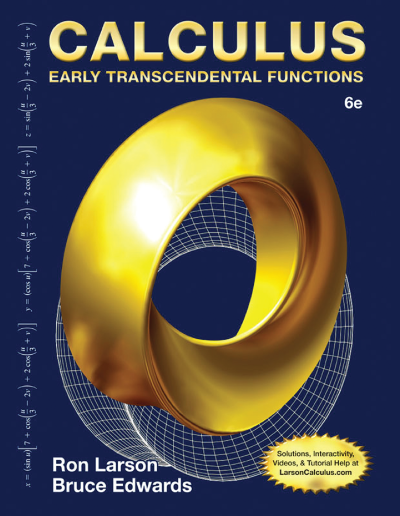Emilie de Breteuil
(1706 – 1749)
Gabrielle-Emilie Le Tonnelier de Breteuil, Marquise du Châtelet-Lomont, was born on December 17, 1706 in Paris, France. Emilie was the daughter of Louis-Nicholas Le Tonnelier de Breteuil, Baron of Preuilly and chief protocol at the French Court, and his beautiful wife, Gabrielle Anne de Froulay.
Women of the French aristocracy were expected to be dainty, amusing and attractive. At the age of eight or nine, Emilie had none of these attributes; therefore, she was an embarrassment to her charming, superficial parents. Louis-Nicholas de Breteuil expressed his dismay in a letter to his friend:
“My youngest is an odd creature destined to become the homeliest of women. Were it not for the low opinion I hold of several bishops, I would prepare her for a religious life and let her hide in a convent. She stands as tall as a girl twice her years, she has prodigious strength, like that of a wood-cutter, and is clumsy beyond belief. Her feet are huge, but one forgets them the moment one notices her enormous hands. Her skin, alas, is as rough as a nutmeg grater, and altogether she is as ugly as a Gascon peasant recruit in the royal footguards.”
Because Emilie was so obviously unmarriageable, her parents determined that she must be educated. Had she been attractive, she would have been taught nothing more demanding than embroidery and the art of clever conversation, since the Age of Enlightenment in which she lived was not so enlightened as to acknowledge the equality of women. Fortunately, Emilie’s keen intelligence was challenged by excellent tutors who introduced her to classical literature and mathematics.
A gifted linguist, Emilie soon mastered Latin, English, and Italian, and translated the Aeneid from Latin to French. While this was indeed impressive, her mathematical genius was legendary. She is said to have been able to accurately divide in her head one nine-digit number by another, and was conversant from an early age with the great mathematical works of her day.
Then, when she was fifteen years old, a talent of quite another sort emerged. The awkward, unappealing child was suddenly an irresistibly beautiful woman. From that year until her death, Emilie never lacked for lovers. At five feet, nine inches, she was taller than most men of her time. Her imposing appearance and unusually good education, combined with a natural gift for coquetry, drew some of the finest minds in France to her bed.
Emilie decided at age nineteen that the time had come for her to marry. After carefully evaluating the attributes she most desired in a husband, Emilie settled on Marquis Florent-Claude du Châtelet-Lomont. The Marquis required nothing more of his wife than that she produce an heir, and offered in return his rank and real estate. An added bonus was his appointment as a military officer, which often called him far from home. Their marriage afforded Emilie the wealth and freedom to do as she pleased.
Two children were born soon after Emilie and the Marquis were married. Her pregnancies were but a temporary inconvenience; as was the custom of the day, nannies cared for her son and daughter. Emilie divided her time between gambling and the social life at court, on the one hand, and the study of mathematics on the other. She took lovers, but rarely more than one at a time, in deference to French etiquette. Among the men she chose was a leading mathematician and astronomer, Pierre Louis de Maupertuis, who also served for a time as her tutor.
Then, in 1733, Emilie met the French philosopher and author Francois Marie Arouet Voltaire, who would have an incalculable influence on her life and work. Emilie and Voltaire were virtually inseparable from the moment they met until her death sixteen years later. With the blessing of Emilie’s husband, who greatly admired the philosopher, Emilie and Voltaire renovated the du Châtelet ancestral home at Cirey-sur-Blaise. Here they lived in unwedded bliss, though Voltaire complained that he often wished that Emilie’s “appetites for the making of love were less voracious.”
This was a remarkably prolific period for them both, though especially for Emilie. It was at Cirey that she, at Voltaire’s suggestion, translated Newton’s Philosophiae naturalis principia mathematica. Published posthumously in 1759, Emilie’s edition of Newton’s monumental work was instrumental in freeing her countrymen from allegiance to Descarte’s outmoded theories, and is to this day the only French translation of the Principia.
Another influential work completed during this period was Emilie’s Institutions de physique. Originally written as a physics text for her son, Institutions was an extraordinarily lucid and scholarly analysis of the work of leading mathematicians, and was widely used for many years.
In 1748, Emilie acquired a second, much younger lover, the Marquis J. F. de Saint-Lambert. Voltaire was distressed to discover that he had a rival, but his love for Emilie never faltered. Indeed, he was remarkably supportive when Emilie, at the age of forty-two, discovered she was pregnant by Saint-Lambert.
Emilie was so intent on completing her translation of the Principia that she apparently ignored the onset of labor. It is said that the infant, a girl, was born under her mother’s desk. Emilie set the child on a geometry book and worked a little longer before going to bed.
Voltaire, Saint-Lambert, and the Marquis du Châtelet all gathered at Emilie’s side to entertain her as she convalesced. Apparently none of them saw anything at all unusual in this arrangement. Emilie appeared to be recovering well when suddenly, on September 10, 1749, she died of childbirth fever. The three men were disconsolate, and wept in each other’s arms as they mourned their loss. Emilie’s newborn child died a few days later.
Links
http://www-gap.dcs.st-and.ac.uk/~history/Biographies/Chatelet.html
http://www.math.wichita.edu/history/women/chatelet.html
References
- Grinstein, Louise S. and Paul J. Campbell, ed. Women of Mathematics: A Biobibliographic Sourcebook. New York: Greenwood Press, 1987.
- Osen, Lynn M. Women in Mathematics. Cambridge, Massachusetts: The MIT Press, 1974.
- Perl, Teri. Math Equals: Biographies of Women Mathematicians+Related Activities. Menlo Park, CA: Addison-Wesley Publishing Company, 1978.











